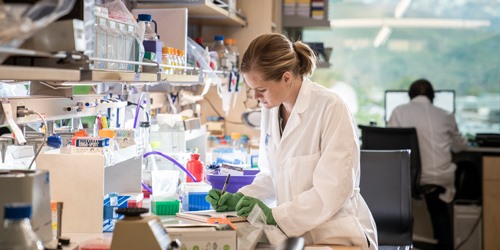How are the Meso Scale Discovery (MSD) Assay Validated?


Meso Scale Discovery Assay offers a clinical bioanalysis platform that makes the best use of electrochemiluminescence, thereby facilitating the quantitation of both single and multiple target analytes. These immunoassays find their applicability across the research-intensive fields of life sciences, clinical and pre-clinical studies.
Table of Contents
Principle of MSD assay
Meso Scale Discovery assay promises a rapid and convenient method for developing and transferring new assays from ELISA to the mesoscale discovery electrochemiluminescence surface. Every spot within the well represents an electrode surface absorbing capture reagent. The end-user later coats the palate with a wide array of reagents and captures molecules inclusive of carbohydrates, antibodies, viruses, and lysates. Then, the sample and an antibody solution conjugated with electrochemiluminescence labels are added to the wells. The imager applies a voltage across the plate electrodes, thereby measuring the overall emitted light’s intensity.
Best validation practices for Meso Scale Discovery Electroluminescence
The calibrators, samples, and controls should be well-diluted in polypropylene microcentrifuge tubes before proceeding with the actual MSD process.
A complete range of capture and detection antibody titration should be measured. This will aid in increasing the specific assay signals, thereby reducing the background. It is imperative to maintain the assay signal below 1 million counts of MSD’s top dynamic range.
In the absence of the sample under analysis, if you witness a high background of more than 1000 counts, you can use lower antibody concentrations to facilitate the reduction of background, thereby maintaining the desired level of assay performance. Alternatively, the user may prefer using different blockers to detect the antibody solution at a concentration of around 0.1 percent. Meso Scale Discovery Electroluminescence promises a complete blocker kit for detecting the blocking agents’ presence with the reducing background signals.
The assay signals can be optimized by varying incubation times. For this, in the GLP Laboratory mix the sample or your calibrator and the detection bodies for simultaneous incubations, thereby simplifying the assay protocol. Co-incubating your samples and detecting antibodies can lead to a hook effect at the high concentrations of your analytes.
Therefore, it is recommended to shake your MSD assay plates throughout your incubation period at a speed of more than 300 rpm. Shaking results in diffusion kinetics, allowing the binding equilibrium to be attained within a short interval. You may maintain a consistent shaking speed to minimize any variability, if possible.
Whenever required, an MSD read buffer of 2X concentration should be used to prevent assay background signals from ranging too close to your instrumental background signal. If your 1X buffer yields low specific signals, you may prefer using 2X read buffer to increase the signals, thereby reducing both their inter-run and inter-plate variability.
Variability in MSD assays and signal reproducibility –
Factors contributing towards the MSD assay variability and signal reproducibility are indicated as follows –
Pipetting variability
Variability in the assay is directly related to the pipetting differences or operational differences. It is, therefore, crucial to ensure that the pipettes are well-calibrated with the correct pipette use.
Plate washing equipment
Automated plate washers can lead to the introduction of inconsistent signals due to blocked and contaminated pins. Therefore, it is essential to ensure that your plates are well-washed, cleansed, and well maintained.
Articles You May Read
- Top Social Media Networks that are Based on Blockchain
- 10 Reasons Why You Should Use Webinar For Startup Growth
- Latest Backend Web Development Tools You Should Know









